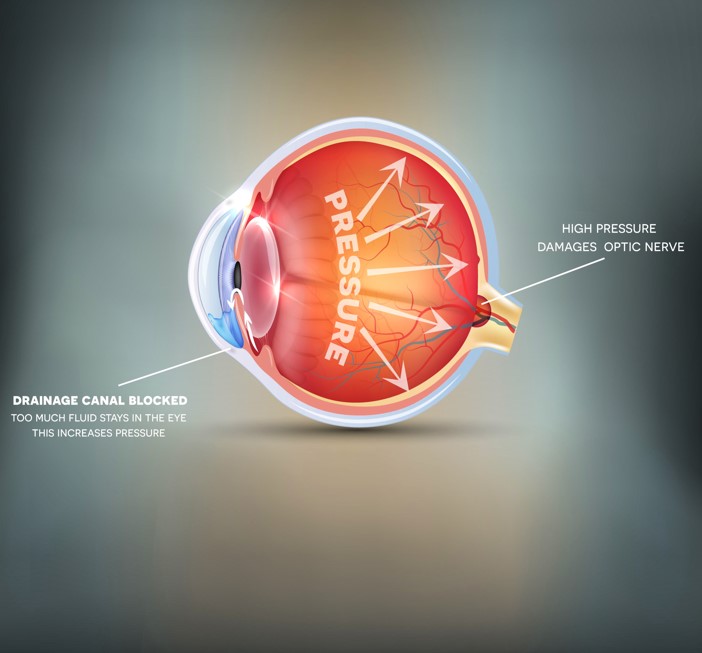Ocular Hypertension occurs when the pressure inside the eye is greater than it normally is. The eye pressure accumulates when the eye doesn’t drain properly. High intraocular pressure in the eye can cause glaucoma, one of the leading causes of vision loss. The optic nerve appears clear in ocular hypertension and usually has no signs or symptoms. However, those with ocular hypertension are at an increased risk for glaucoma.

Glaucoma forms when high intraocular pressure damages the optic nerve. When the aqueous humor does not drain properly, pressure builds up and causes ocular hypertension. Those with increased risk of ocular hypertension include:
- Family history of ocular hypertension or glaucoma.
- Those who have diabetes or high blood pressure.
- Individuals over 40 years old.
- Individuals who suffer from nearsightedness, pigment dispersion syndrome, and pseudo exfoliation syndrome.
An ophthalmologist will measure the pressure in your eye to assess how severe your condition is. First, your eye is numbed with eye drops, and a tonometer measures how your cornea resists slight pressure. They will then check for glaucoma and examine your optic nerve for signs of damage, afterward checking your peripheral vision.
If your eye pressure is only slightly elevated, an ophthalmologist may withhold prompt treatment and monitor with regular testing. They may use eye drop medicine to lower your intraocular pressure and schedule a follow-up visit within several weeks of starting your medication. A laser eye procedure can also be used to lower eye pressure, decreasing your risk of glaucoma. The procedure does not entirely eliminate the risk, and some patients with ocular hypertension may still develop glaucoma. If this happens to you, an ophthalmologist will walk you through exploring further treatment options.






